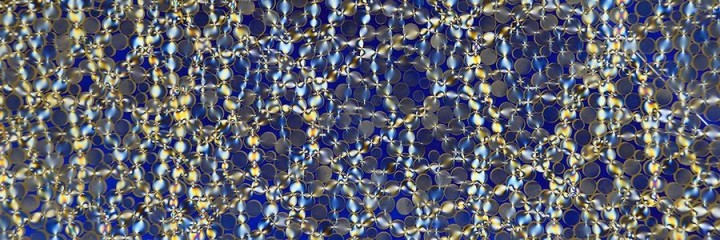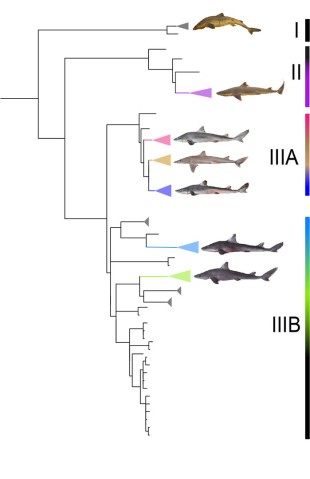Nonlinear and Non-equilibrium Physics Unit
Associate Professor Mahesh Bandi
Abstract
We are an experimental group with primary interests in nonlinear and non-equilibrium physics, both applied and fundamental. Our work often intersects with soft matter physics, applied mathematics, mechanics, and their application to biologically inspired problems. Our current focus is trained towards problems in interfacial fluid dynamics, granular solids, biomechanics of the human foot and fluctuations in renewable energy sources.
1. Staff
- Dr. Fabienne Ziadi, Postdoctoral Scholar
- Ms. Ayano Sakiyama, RUA
- Mahesh Bandi, Associate Professor
2. Collaborations
2.1 Foot in motion - materials, mechanics & control (funded by HFSP)
- Description: Theoretical, numerical and experimental studies in evolution of stiffness in the human foot.
- Type of collaboration: Joint research
- Researchers:
- Professor Madhusudhan Venkadesan, Yale University, USA.
- Mr. Nihav Dhavale, National Centre for Biological Sciences, India.
- Ms. Neelima Sharma, Yale University, USA.
- Professor Shreyas Mandre, Brown University, USA.
- Ms. Maria Fernanda Lugo-Bolanos, Brown University, USA.
- Professor Mahesh M. Bandi, OIST Graduate University, Japan.
- Dr. Dhiraj K. Singh, OIST Graduate University, Japan.
- Mr. Khoi D. Nguyen, Technical Staff, OIST Graduate University, Japan.
2.2 Memory in frictional granular matter
- Description: Theoretical, experimental, and numerical exploration on the problem of training frictional granular media to gain configurational memory.
- Type of collaboration: Joint research
- Researchers:
- Professor Itamar Procaccia, Department of Chemical and Biological Physics, Weizmann Institute of Science, Israel.
- Professor H. George E. Hentschel, Department of Physics, Emory University, USA.
- Dr. Jacques Zylberg, Department of Chemical and Biological Physics, Weizmann Institute of Science, Israel.
- Dr. Saikat Roy, Department of Chemical and Biological Physics, Weizmann Institute of Science, Israel.
- Dr. V. Sathish Akella, Nonlinear and Non-equilibrium Physics Unit, OIST Graduate University, Japan.
- Professor Mahesh M. Bandi, Nonlinear and Non-equilibrium Physics Unit, OIST Graduate University, Japan.
- Prof. Oleg Gendelman, Department of Mechanical Engineering, Technion, Haifa, Israel.
- Dr. Prasenjit Das, Department of Chemical and Biological Physics, Weizmann Institute of Science, Israel.
2.3 Solar photovolatic power fluctuations
- Description: An analysis of the character of power fluctuations in solar photovoltaic power at the scale of a single solar panel, a solar plant, and at the grid scale.
- Type of collaboration: Joint research
- Researchers:
- Prof. Golan Bel, Ben Gurion University of the Negev, Israel.
- Prof. Mahesh Bandi, Nonlinear and Non-equilibrium Physics Unit, OIST Graduate University
2.4 Biomechanics of Mudskipper locomotion
- Description: Experimental study of the biomechanics underlying the various modes of mudskipper locomotion.
- Type of collaboration: Joint research
- Researchers:
- Dr. Fabienne Ziadi, Nonlinear and Non-equilibrium Physics Unit, OIST Graduate University
- Prof. Madhusudhan Venkadesan, Department of Mechanical Engineering and Materials Science, Yale University.
- Prof. Shreyas Mandre, Mathematics Institute, Warwick University, UK.
- Prof. Mahesh Bandi, Nonlinear and Non-equilibrium Physics Unit, OIST Graduate University
3. Activities and Findings
3.1 Mudskipper pectoral fin musculature
Mudskippers are amphibious fishes that belong to the large family of gobiidae. These sophisticated 'land-walkers' inhabit mangroves and mudlfats and have acquired a set of unique behavioral and physiological adaptations that enables them to live outside of the water for a prolonged period of time. Mudskippers are not only capable of breathing air, they also use their paired pectoral fins for the primary mode of locomotion on land. As extant bony fishes, mudskippers serve as living model organism to elucidate the transition of vertebrates from water to land.
To better understand the morphological adaptations that promotes fin-assisted walking behavior, we reconstructed and compared the pectoral fin musculoskeletal anatomy within the mudskipper lineage using non-destructive 3D imaging techniques. Mudskipper pectoral fin phenotypes represent a continuum of adaptations towards a terrestrial life style. Varying degrees of selection pressure may lead to different stages in the diversification of the mudskipper pectoral fin musculature. Therefore, mudskippers are good examples of macroevolution in progress.
3.2 Re-evaluation of deep-sea dogfishes (genus Squalus) in Japan using phylogenetic inference
Japan is known for its marine biodiversity and diverse ecosystem due to its unique geological composition and water currents creating suitable habitats for a wider range of marine species. A rich deep-sea shark community with high endemism occurs on the continental shelf. Yet, the deep-sea shark taxonomy is poorly understood. The big-eyed dogfishes of the genus Squalus Linnaeus, 1758, commonly known as spurdogs, are a highly resembling group of globally distributed sharks in temperate and tropical waters. Their morphological similarity and the lack of effective diagnostic features has led to an extensive taxonomic confusion and synonymization in the past.
In this study, we reconstructed the phylogeny of deep-sea elasmobranchs within the genus Squalus using mitochondrial genes, and concordantly examined the morphological divergence of congeners. Our results revealed hidden spurdog diversity in Japan with high local endemism and occurrence of disjunct distribution pattern within the genus. In particular, two genetically and phenotypically distinct species of spurdogs were discovered from Japan, one from the submarine valley in Tokyo Bay and one from the subtropical waters of the Ryukyu Archipelago. The globally underestimated dogfish diversity, limited distribution ranges and general lack of life history data of many dogfishes presents a challenge in terms of resilience and effective deep-sea shark conservation.
3.3 Geographic dependence of the solar irradiance spectrum
Temporal fluctuations in solar irradiance are important in energy harvesting and the study of ecological systems and climate. As solar irradiance is not stationary, analysis is often made in the frequency domain, rather than the time domain, and the power-law spectrum is often attributed to atmospheric effects, such as dust and clouds. The authors show that the power-law spectrum of solar irradiance appears even for a clear sky, due to modulation of the diurnal oscillations caused by varying daylight duration. Thus the power law depends on geographical location, and one must account for the multiplicative effect of atmospheric factors on the clear-sky power-law spectrum.
3.4 Universal scaling laws for shear-induced dilation in frictional granular media
Compressed frictional granular matter cannot flow without dilation. Upon forced shearing to generate flow, the amount of dilation may depend on the initial preparation and a host of material variables. On the basis of both experiments and numerical simulations we show that as a result of training by repeated compression-decompression cycles the amount of dilation induced by shearing the system depends only on the shear rate and on the (pre-shearing) packing fraction. Relating the rheological response to structural properties allows us to derive a scaling law for the amount of dilation after n cycles of compression-decompression. The resulting scaling law has a universal exponent that for trained systems is independent of the inter-granules force laws, friction parameters and strain rate. The amplitude of the scaling law is analytically computable, and it depends only on the shear rate and the asymptotic packing fraction. n
4. Publications
4.1 Journals
- Golan Bel , M. M. Bandi. “Geographic Dependence of the Solar Irradiance Spectrum at Intermediate to High Frequencies”, Physical ReviewApplied,12(2),024032 (2019). doi/10.1103/PhysRevApplied.12.024032
- F Paraz , M M Bandi. “Second order structure functions for higher powers of turbulent velocity”, Journal of Physics: Condensed Matter,31(48),484001 (2019). doi/10.1088/1361-648X/ab38ca
- M. M. Bandi , Prasenjit Das , Oleg Gendelman , H. George E. Hentschel , Itamar Procaccia. “Universal scaling laws for shear induced dilation in frictional granular media”, Granular Matter,21,40 (2019). doi/10.1007/s10035-019-0890-x
- Madhusudhan Venkadesan, Ali Yawar, Carolyn M. Eng, Marcelo A. Dias, Dhiraj K. Singh, Steven M., Tommasini, Andrew H. Haims, Mahesh M. Bandi, Shreyas Mandre.“Stiffness of the human foot and evolution of the transverse arch”, Nature, volume 579, pages97–100(2020). doi.org/10.1038/s41586-020-2053-y
- Tamoghna Das and MM Bandi, "Steady state dynamic dependence between local mobility and non-affine fluctuations in two-dimensional aggregates" J. Phys.: Condens. Matter 32, 214004 (2020). doi.org/10.1088/1361-648X/ab6e94
- F. Ziadi-Künzli, T. Soliman, H. Imai, M. Sakurai, K. Maeda, K. Tachihara. “Re-evaluation of deep-sea dogfishes (genus Squalus) in Japan using phylogenetic inference”, Deep Sea Research Part I: Oceanographic Research Papers, Volume 160, article 103261 (2020). DOI: 10.1016/j.dsr.2020.103261
4.2 Books and other one-time publications
Nothing to report
4.3 Oral and Poster Presentations
<Seminars>
- Bandi, M. M., “Spectrum of wind power fluctuations”, Soft matter seminar, Leiden University. (June 2019).
- Bandi, M. M., “Spectrum of Wind power fluctuations”, Aarhus University, Aarhus, Denmark. (July 2019).
- Bandi, M. M. , “Perturbative Frictional Jamming and its relation to electron transport in disordered media”, New York University, New York, USA. (August 2019).
- Bandi, M. M. , “The Spectrum of Wind Power Fluctuations”, Yale-NUS, Singapore. (October 2019).
- Bandi, M. M., “Perturbative frictional Jamming and its relation to electron transport in disordered media”, Nanyang Technological University, Singapore. (October 2019).
- Bandi, M. M., “Perturbative Frictional Jamming and its relation to electron transport in disordered media”, Condensed Matter Seminar Academia Sinica, Taiwan. (December 2020).
- Bandi, M. M., “Stiffness of the Human foot and evolution of the transverse arch”, Institute of Physics Colloquium, Academia Sinica, Taiwan. (December 2020).
- Bandi, M. M., “Perturbative Frictional Jamming and its relation to electron transport in disordered media”, Yukawa Institute for Theoretical Physics, Kyoto University, Japan. (Jan 2020).
- Bandi, M. M. , “Perturbative frictional jamming and its relation to electron transport in disordered media”, Osaka University, Japan. (Jan 2020).
- Bandi, M. M. , “Perturbative Frictional Jamming and its relation to electron transport in disordered media”, Tokyo University, Tokyo, Japan. (Jan 2020).
- Bandi, M. M. , “Higher-order turbulence spectra: From Energy to UAV”, UNIVERSITY of MASSACHUSETTS, Massachusetts, USA. (February 2020).
<Conference invited lecture>
- Bandi, M. M., "Stiffness of the human foot and evolution of the transverse arch", Workshop on Navigation from Flies to Robots, ICTP Italy. (June 2019).
- Bandi, M. M., “Aggregate morphologies in collective behavior of self-propelled Camphor boats”, OKINAWA COLLOIDS 2019, Bankoku Shinryokan, Okinawa, Japan. (Nov 2019).
5. Intellectual Property Rights and Other Specific Achievements
1) "System and method for obtaining force based on photoelasticity" MM Bandi, M Venkadesan, S Mandre. Patent No.: WO2015186356A1 (2019).
6. Meetings and Events
Nothing to report
7. Other
Nothing to report.











